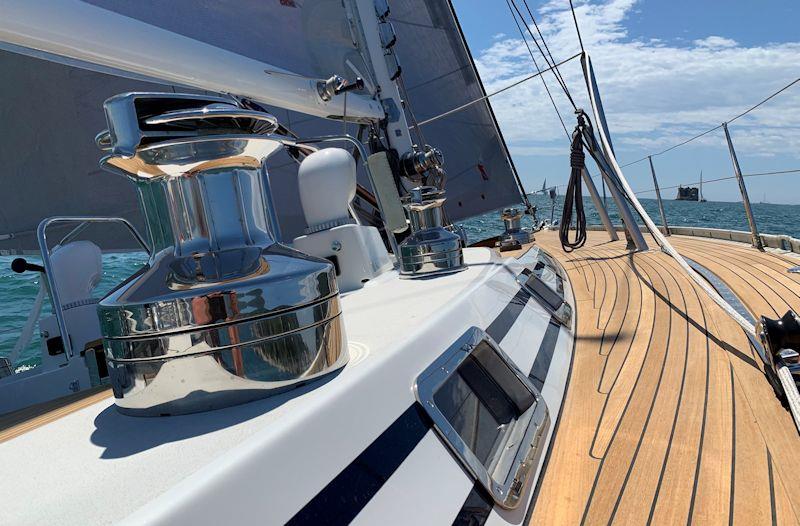
Quality Cruising with Andersen's Electric Winch Range
by Phil Anniss 4 Mar 2021 09:00 PST

Quality Cruising with Andersen's Electric Winch Range © Sparkman & Stephens Swan Association
Andersen Winches are iconic. Often considered the benchmark for quality, Andersen's elegant, stainless steel winches take pride of place on the foredeck. Underneath the stainless steel exterior, an internal construction manufactured from aluminium bronze - which is far more durable than aluminium - ensures cruising sailors can be safe in the knowledge their Andersen winch will last for a lifetime.
Andersen's electric winches are no different. Their electric range aims to make sailing easier and more enjoyable: raise the sails, trim the sheets and control your mainsail/genoa with a push of the illuminated button.
The extra manpower enables sailing to be shared with family and friends, aids short-handed sailors and increases the weather conditions in which cruisers can safely sail.
Across Andersen's electric winch models, there are distinct advantages. Operation is smooth and quiet: the high-quality European-engineered motor is combined with an optimal gearbox, delivering high speed at low load for fast sheeting in, and low speed at high load for safe fine-tuning when trimming.
As with Andersen's manual winch range, their electric winches feature their renowned self-tailing technology which automatically accommodates a wide range of different rope sizes.
The 'Power Ribs' (vertical ribs) on the drum provide horizontal friction, whilst the highly polished surface ensures ropes slide easily up the drum. The result? Maximum hold without damaging lines - ideal for saving those precious pennies on your running rigging.
If you're concerned about incorporating an electrical component onboard - don't worry. Andersen's electric winches are safe for extended offshore use. The powerful motor is protected from overload with an amperage sensor, and a thermal sensor is fitted to cut out in case of overheating.
Installation is also simple: installed in the same position as the winch you are replacing, there is no separate control box required. Simply connect the positive and negative power cables to the motor terminals.
The primary consideration when switching to electric winches is space for the motor. Andersen's electric winches are available in three configurations: Horizontal, Above and Below.
Andersen Electric Winch Horizontal
Andersen's 'horizontal' range is available with 1 speed or, for boats larger than 16m, 2 or 3 speeds. N.B. For all electric models, manual use, with a standard winch handle, is always available as back up. As the name suggests, the motor for the 'horizontal' model sits below deck, at a horizontal angle.
Available Range:
- 1-Speed: 28, 34, 40, 46, 50, 52, 58, 62, 68, 72 (12V or 24V)
- 2-Speed: 110 (24V only)
- 3-Speed: 82 (24V only)
Compact: Above, Below
Andersen's compact range features a low-profile gearbox. The controller and motor are more compact, taking up less space than the horizontal configuration - ideal for boats with less available space.
The 'Above' deck winch doesn't take up space below deck at all, maximising valuable cabin headroom. Yet, with the motor more exposed to the elements, additional precautions should be taken.
For the 'Below' deck configuration, the motor sits below the deck but takes up far less space than the horizontal winch.
The compact winches have a variable speed, proportionate to how hard you press the button.
Available range:
- Variable speed: 28, 34, 40, 46, 50, 52, 58, 62, 68, 72 (12V or 24V)
Conclusion
Andersen electrics winches are high-quality and functional, perfect for cruising sailors searching for longevity and durability.
You can view Andersen Electric winches or if you have any questions about switching to electric winches, you can contact or via the Electric Winch Enquiry Form.